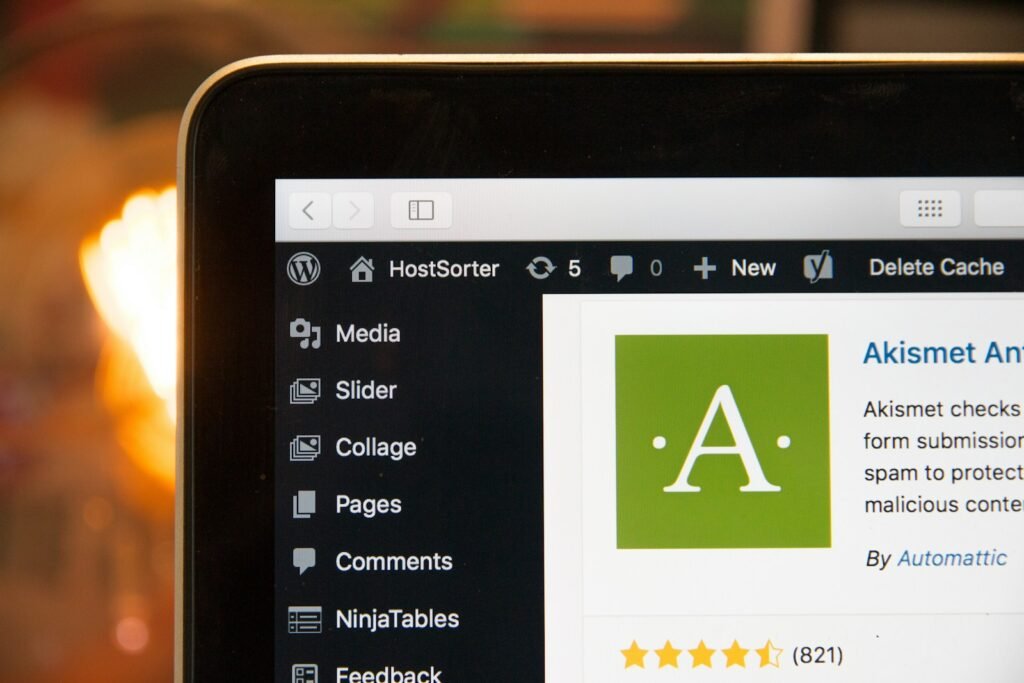When building a website with WordPress, understanding the difference between Pages, Posts, and Custom Post Types is crucial. Each of these content types serves a different purpose, and knowing when and how to use them can significantly affect how you structure your website.
In this blog, I’ll walk you through the fundamental Pages vs. Posts vs. Custom Post Types, their features, and when to use each. By the end, you’ll have a solid understanding of how to organize your content effectively in WordPress.
Comparison of Pages, Posts, and Custom Post Types
| Feature | Pages | Posts | Custom Post Types |
|---|---|---|---|
| Purpose | Static content, structure | Time-sensitive content | Specialized content |
| Hierarchy | Hierarchical | Chronological | Can be hierarchical or flat |
| Comments | Disabled by default | Enabled by default | Customizable |
| Taxonomies | No | Categories and tags | Custom taxonomies |
| Templates | Custom templates | Custom templates | Custom templates |
| Custom Fields | Limited | Limited | Extensive |
| Archives | No | Yes | Customizable |
| Examples | About us, contact us, services | Blog articles, news, events | Products, testimonials, portfolio items |
Pages in WordPress

Purpose of Pages
Pages in WordPress are best suited for static content—the kind of content that remains unchanged over time. Think of the essential components of your website like the About Us, Contact Us, and Services sections. These pages are not part of the regularly updated blog content but represent the foundational structure of your website.
Pages often contain crucial information that visitors can expect to remain consistent. They’re not designed to reflect chronological updates like blog posts but rather serve as standalone content, helping to shape the architecture of your site.
Features of Pages
Hierarchy
One of the most beneficial aspects of Pages is their hierarchical structure. You can easily create parent and child pages, which help in organizing content in a more structured and logical way. For example, if you have a “Services” page, you can create sub-pages like “Web Development” and “SEO Services” underneath it. This feature is incredibly useful when building a complex site with multiple layers of information.
Templates
Pages are highly customizable in terms of layout and design. Custom templates allow you to define specific looks for different pages. If you want your About Us page to have a different layout than your Contact Us page, you can use custom templates to achieve this. This flexibility gives you more control over the appearance of static content.
No Comments
By default, WordPress Pages do not support comments. This is because Pages are designed for content that doesn’t need user interaction or ongoing discussions. For instance, the Privacy Policy or Terms and Conditions pages are not places where readers are expected to leave comments.
When to Use Pages
Pages are ideal for relatively timeless content. If your content doesn’t need regular updates or chronological sorting, such as contact details, service descriptions, or company policies, Pages is the perfect solution.
Posts in WordPress

Purpose of Posts
In contrast to Pages, Posts are used for time-sensitive content. These are ideal for content that changes or gets updated regularly. Posts are what make up your blog or news feed, and they are typically displayed in reverse chronological order (most recent first).
Posts are best for publishing articles, news updates, event announcements, or any other form of content that’s likely to be updated frequently. If you’re running a blog or a site that focuses on dynamic content, Posts are the backbone of that system.
Features of Posts
Categories and Tags
One key feature that sets Posts apart from Pages is their ability to be organized with categories and tags. Categories allow you to group related posts, while tags provide additional micro-categorization. This structure makes it easier for your readers to find the content they are looking for.
For instance, if you run a travel blog, you might categorize your posts by destination (e.g., Europe, Asia) and use tags for specific topics like “budget travel” or “luxury hotels.”
Comments
Posts are typically designed to foster user interaction. Unlike Pages, Posts allow comments, creating a space for discussion and engagement with your readers. This is a great way to build a community around your content, gather feedback, and create more interaction on your website.
Archives
WordPress automatically creates archives for your Posts based on factors like date, category, and tag. This archive system allows users to navigate older posts easily. For instance, if you have a monthly blog, WordPress will automatically group your posts by month and year, making it easy for visitors to go back and explore older content.
When to Use Posts
You should use Posts whenever your content is intended to be updated frequently or follows a specific timeline. Blog articles, news updates, and event announcements are all prime candidates for Posts. If you want your content to be categorized, tagged, and archived, Posts are the better option.
Read Also: Is Origami Studio Only for Mobile?
Custom Post Types in WordPress

Purpose of Custom Post Types
While Pages and Posts are sufficient for most websites, there are instances where you need something more specialized. This is where Custom Post Types come into play. Custom Post Types allow you to create new content types tailored to your specific needs, beyond the default Pages and Posts.
For instance, if you’re running an eCommerce website, you might want a “Product” custom post type to manage your product listings. Similarly, a portfolio site might benefit from a “Portfolio” custom post type to display work samples, testimonials, or other unique content that doesn’t fit neatly into the Page or Post categories.
Features of Custom Post Types
Custom Fields
One of the most powerful features of Custom Post Types is the ability to add custom fields. These fields allow you to store additional information unique to that content type. For instance, if you’re creating a “Product” custom post type, you might want to add fields for price, SKU, or product description. These fields help you manage and display content that’s specific to the type of post you’re creating.
Taxonomies
Custom Post Types also support custom taxonomies, which allow you to create unique ways to organize your content. While Posts use categories and tags, custom taxonomies give you the flexibility to define new groupings. For example, a “Recipe” custom post type might use taxonomies like Cuisine or Difficulty Level to organize recipes more effectively.
Templates
Just like Pages, Custom Post Types can make use of custom templates. This allows you to create unique layouts and displays for your different types of content. Whether you want a product listing page to look different from your portfolio page, custom templates give you the control you need.
When to Use Custom Post Types
You should consider using Custom Post Types when your content doesn’t fit neatly into the Page or Post categories. Examples include product listings, portfolios, testimonials, and case studies. Custom Post Types offer flexibility, especially when your website requires unique content structures with specific features and fields.
When to Use Pages, Posts, or Custom Post Types
Now that we’ve explored the features and purposes of Pages, Posts, and Custom Post Types, the next important question is: When should you use each?
When to Use Pages
Use Pages when you’re creating static, timeless content that forms the core structure of your website. Examples include:
- About Us
- Contact Us
- Services
- Privacy Policy
- Terms and Conditions
These are the sections of your site that will likely stay the same over time and won’t require frequent updates.
When to Use Posts
Use Posts when you’re dealing with dynamic content that needs to be regularly updated or presented in chronological order. Examples include:
- Blog articles
- News updates
- Event announcements
- Press releases
If you want user interaction through comments or you plan to categorize and tag your content, Posts are the right choice.
When to Use Custom Post Types
Use Custom Post Types when your content doesn’t align well with either Pages or Posts. Custom Post Types are perfect for:
- Product listings (for eCommerce sites)
- Portfolio items (for creatives)
- Testimonials (for service-based businesses)
- Case studies or projects
- Recipes, reviews, or podcasts
If you need specific fields, taxonomies, or custom templates for your content, Custom Post Types give you the flexibility to structure and present your content in unique ways.
Read Also: What Is Bubble? Everything You Need To Know
Conclusion
By understanding the differences between Pages, Posts, and Custom Post Types in WordPress, you can make more informed decisions about how to structure your website’s content. Pages are best for static, evergreen content, while Posts shine for time-sensitive updates and interactive content. For everything else, Custom Post Types provide the flexibility to create and manage specialized content.
In the end, the key is to use the right tool for the job. By doing so, you’ll ensure that your website remains well-organized, easy to navigate, and effective at communicating your message.




What do you think?
Your point of view caught my eye and was very interesting. Thanks. I have a question for you.